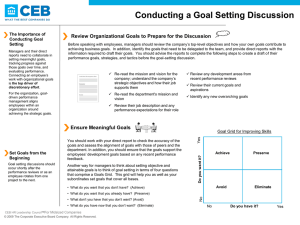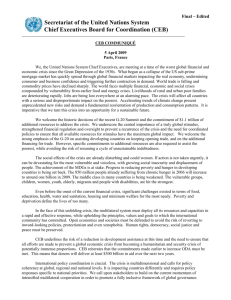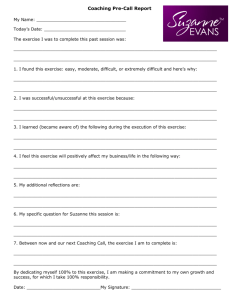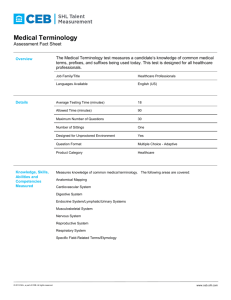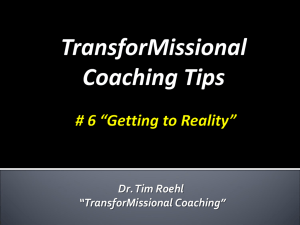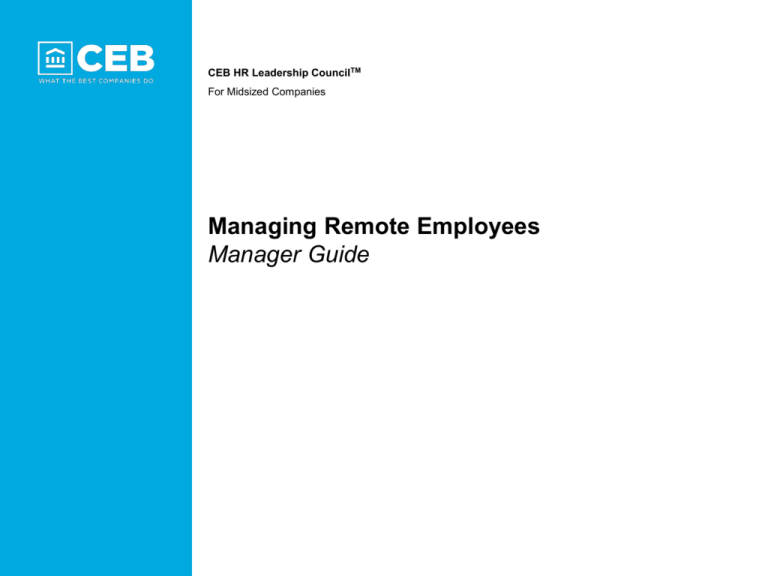
CEB HR Leadership CouncilTM
For Midsized Companies
Managing Remote Employees
Manager Guide
OVERVIEW
Mandate
Build the Relationship
Why This Is Hard
Remote employees and
managers find it hard to align
expectations of roles,
responsibilities, goals, and
workflows.
What You Should Do
Set clear expectations
(pages 5–6).
Understand employee’s
expectations (page 7).
Overcome cultural and
geographic barriers (page 8).
Maintain Engagement
A lack of visibility causes
managers to struggle to identify
performance and engagement
issues early on.
Maintain visibility into team and
individual workflows (page 10).
Connect remote employees to
the rest of the team (page 11).
Utilize multiple channels to
maintain constant
communication (page 12).
Manage Performance
Managers have limited visibility
into remote employees’ work
processes.
Evaluate performance based on
outcomes, not processes
(page 14).
Develop employees through
effective remote coaching
(page 15).
CEB HR Leadership CouncilTMFor Midsized Companies
© 2011 The Corporate Executive Board Company. All Rights Reserved.
2
ROAD MAP
Build the
Relationship
Maintain
Engagement
Manage
Performance
CEB HR Leadership CouncilTMFor Midsized Companies
© 2011 The Corporate Executive Board Company. All Rights Reserved.
3
Managers of remote
employees must
assess workloads,
progress, and
performance through
non-visual cues.
BUILD THE RELATIONSHIP
CHALLENGE
Remote employees and managers find it hard to align expectations of roles, responsibilities, goals, and workflows.
“My direct report says that he understands
his role and responsibilities, but I’m not
sure to what extent that’s actually true. I
wonder if he’s just afraid to admit he
doesn’t understand.”
– Manager
“I never get a chance to clarify my broader
role and responsibilities with my manager
because we speak infrequently, and when
we do speak, our discussions are focused
on the specifics of the projects I am
working on currently.”
– Remote Employee
SOLUTIONS
1. Set Clear Expectations
BUILD THE
RELATIONSHIP
2. Understand Employee’s
Expectations
MAINTAIN
ENGAGEMENT
3. Overcome Cultural and
Geographic Barriers
MANAGE
PERFORMANCE
CEB HR Leadership CouncilTMFor Midsized Companies
© 2011 The Corporate Executive Board Company. All Rights Reserved.
4
Set expectations and
goals clearly at the
beginning of the
relationship since
opportunities for
interaction are limited.
Clearly communicate the
individual’s role and
responsibilities.
Establish where the
employee fits into the team.
Acknowledge issues that the
employee may encounter
when working remotely.
BUILD THE RELATIONSHIP
1. Set Clear Expectations
Provide Information Regarding Individual Responsibilities and Team Attributes at the Beginning of the
Remote Management Relationship
Individual’s Role and Responsibilities
Team Attributes
Highlight the day-to-day responsibilities of the
individual.
Clearly define team members’ roles and
responsibilities and how they fit with one
another.
Clearly communicate to the employee that you
expect him/her to proactively address any
issues that may arise.
Clarify how the individual’s role and
responsibilities impact the organization’s
objectives.
Establish your preferred methods of
communication (see page 11 for more
information).
Describe your management style.
Identify what technology the employee will need
access to and ensure that it is working properly.
Establish protocol for tracking when employees
are on vacation, and make it accessible to all
team members.
Discuss Challenges That May Arise
Common Challenges of Remote Working Relationships
Technology malfunctions or incompatibilities
Ambiguity of work practices and norms
Tendency to make assumptions or misinterpret communications
Misaligned team visions
Feelings of isolation or exclusion from the team
BUILD THE
RELATIONSHIP
MAINTAIN
ENGAGEMENT
MANAGE
PERFORMANCE
CEB HR Leadership CouncilTMFor Midsized Companies
© 2011 The Corporate Executive Board Company. All Rights Reserved.
5
Establish well-defined
and measurable
performance
expectations.
BUILD THE RELATIONSHIP
1. Set Clear Expectations (Continued)
Clarify Role and Performance Expectations at the Beginning of the Remote Management Relationship
At the beginning of the
relationship, clarify the
individual’s objectives and
how they connect to the
team’s and organization’s
objectives.
Communicate expected
outcomes using the
S.M.A.R.T framework to
ensure the remote employee
understands performance
expectations.
Effectively Define Performance Expectations
Set key metrics on which you will measure the
employee.
Provide clear guidelines regarding quality of
work.
Determine frequency of one-on-one and team
meetings.
Ensure Clear Objectives Using the S.M.A.R.T.
Framework
Use the S.M.A.R.T. framework to ensure that
objectives are established clearly. You should be
able to answer “yes” to the following questions for
each objective:
1. Is it simple?
Discuss when and how you will provide informal
and formal feedback.
2. Is it measurable?
Link responsibilities to the team’s mission and
values.
4. Is it results-oriented?
BUILD THE
RELATIONSHIP
3. Is it actionable?
5. Is it time-based?
MAINTAIN
ENGAGEMENT
MANAGE
PERFORMANCE
CEB HR Leadership CouncilTMFor Midsized Companies
© 2011 The Corporate Executive Board Company. All Rights Reserved.
6
The lack of face-to-face
interaction makes it
difficult for managers to
understand remote
employees’ aspirations
and frustrations.
BUILD THE RELATIONSHIP
2. Understand Employee’s Expectations
Managers must maintain
open lines of communication
and directly ask employees
about what motivates and
challenges them.
Managers must also discuss
the logistics of making a
remote working relationship
effective.
Questions to Ask Your Direct Report at the Beginning of a
Remote Management Relationship
What are your short- and long-term career aspirations?
What do you think are your greatest strengths?
What do you think are your greatest development areas?
What are your expectations of me as your manager?
What do you see as the benefits of working remotely?
What concerns you about working remotely?
In what instances do you prefer which method(s) of
communication?
What will your working hours be?
What is your time zone and what is the best way to make it
work with other team members’ time zones?
What additional information would help me get to know you?
BUILD THE
RELATIONSHIP
MAINTAIN
ENGAGEMENT
MANAGE
PERFORMANCE
CEB HR Leadership CouncilTMFor Midsized Companies
© 2011 The Corporate Executive Board Company. All Rights Reserved.
7
Maintain an inclusive
team environment and
be accommodating to
employees who sit in
different time zones.
Clarify key words,
ambiguous areas, and
potentially controversial
issues to prevent
misunderstandings.
Allow team members’
cultures to blend so that the
team creates an identity that
embraces all cultures, rather
than forcing the culture of the
organization’s headquarters
on the team.
Be sensitive to employees
working in different time
zones.
BUILD THE RELATIONSHIP
3. Overcome Cultural and Geographic Barriers
Communication
Avoid using slang or colloquial language, which some team members may not understand.
Be straightforward in your communication; things such as sarcasm may not be interpreted correctly when not
delivered in person.
Speak slowly and be sure to enunciate with employees whose first language is not the same as yours.
Cultural Norms
Understand each culture’s work-life balance norms.
Determine the business communication and etiquette norms for each country and share this information
across the team.
Identify if employees’ views of authority differ in their home countries so that you can adjust your
management style appropriately.
Working Hours
Become aware of any national holidays for which employees in other countries should be off from work.
Be aware of time zones.
Use a conference line for meetings and allow employees to dial-in from home if the call is very early or late in
his/her time zone.
Alternate which employees have to work outside of normal working hours when holding team meetings.
If employees come in early to accommodate another time zone, encourage them to leave early that day (and
vice versa).
BUILD THE
RELATIONSHIP
MAINTAIN
ENGAGEMENT
MANAGE
PERFORMANCE
CEB HR Leadership CouncilTMFor Midsized Companies
© 2011 The Corporate Executive Board Company. All Rights Reserved.
8
Managers’ decreased
line of sight to remote
employees makes it
more difficult to monitor
engagement levels.
MAINTAIN ENGAGEMENT
CHALLENGE
A lack of visibility causes managers to struggle to identify performance and engagement issues early on.
“I have little sense of how my remote
employees are getting on with their
work. It’s hard to tell how busy they are, if
they need more help, and whether or not
they are enjoying their work.”
“I feel left out of a lot of conversations and
decisions. It’s as if my manager and team
forget about me.”
– Remote Employee
– Manager
SOLUTIONS
1. Maintain Visibility into Team and
Individual Workflows
BUILD THE
RELATIONSHIP
2. Connect Remote Employees to
the Rest of the Team
MAINTAIN
ENGAGEMENT
3. Utilize Multiple Channels to
Maintain Constant Communication
MANAGE
PERFORMANCE
CEB HR Leadership CouncilTMFor Midsized Companies
© 2011 The Corporate Executive Board Company. All Rights Reserved.
9
Managers must make a
conscious effort to
maintain visibility into
workflows and
processes.
Online shared work spaces
are a good medium through
which to promote
collaboration.
Constant formal and informal
communication allows
managers to track
employees’ work progress
engagement levels.
Remote employees do not
have the same visibility into
what is going on within the
team and organization as
onsite employees do—
managers must ensure that
remote employees stay
informed.
MAINTAIN ENGAGEMENT
1. Maintain Visibility into Team and Individual Workflows
Create Shared Online Work Spaces
Maintain Constant Contact
Utilize project planning tools to maintain
visibility into work capacity of all team members.
Schedule regular meetings to assess progress
and identify issues.
Operate a shared calendar so that employees
know what each team member is working on
and what the deadlines are.
Make a conscious effort to communicate
informally with employees on a regular basis.
Act as the Employee’s Link to the
Organization
Make a concerted effort to keep remote
employees informed of what is going on in the
office and the organization.
If messages are being spread informally
through the organization, make sure to include
remote employees on those communications.
BUILD THE
RELATIONSHIP
MAINTAIN
ENGAGEMENT
MANAGE
PERFORMANCE
CEB HR Leadership CouncilTMFor Midsized Companies
© 2011 The Corporate Executive Board Company. All Rights Reserved.
10
Managers and
employees must make
a deliberate effort to get
to know one another
when working in
multiple locations.
Remote workers may feel
isolated from the team, so
managers must make a
deliberate effort to foster a
sense of inclusion.
Humanize team members by
increasing familiarity and
building relationships with
one another.
During remote meetings,
make a deliberate effort to
ensure that remote
employees are able to
contribute.
MAINTAIN ENGAGEMENT
2. Connect Remote Employees to the Rest of the Team
Foster a Sense of Team
Include remote workers in all onsite activities
(e.g., if onsite employees are taken out for
coffee, send a gift card to the remote worker for
a cup of coffee).
Highlight individuals to the rest of the team
when they reach critical milestones.
Create a team “bulletin board” on the intranet to
celebrate team accomplishments.
Announce awards during team
videoconferences.
Post pictures of remote employees in the office
and send remote employees pictures of inhouse employees.
Encourage Employees to Build Personal and
Professional Relationships with Each Other
Broker live networking opportunities for remote
employees by creating peer groups in each
geographic location.
Dedicate a few minutes at the beginning or end
of meetings for informal conversations, during
which administrative topics are not allowed.
Encourage employees to share information
about their non-work related interests and
hobbies.
If team members are from different countries,
encourage them to share information about their
cultures with the team.
Ensure Inclusion During Team Meetings
Ensure that everyone can hear everyone else during team meetings conducted via the phone or
videoconference and keep background noise to a minimum (e.g., shuffling papers, side comments).
Check with remote employees regularly during phone meetings or videoconferences to see if they have
something to add or ask—it is often harder for them to contribute to the conversation when others cannot
see their non-verbal communication.
BUILD THE
RELATIONSHIP
MAINTAIN
ENGAGEMENT
MANAGE
PERFORMANCE
CEB HR Leadership CouncilTMFor Midsized Companies
© 2011 The Corporate Executive Board Company. All Rights Reserved.
11
Use multiple methods to
communicate clearly
with all team members,
promote transparency,
and foster a sense of
inclusion.
The nature of the topic
should dictate the
communication method
managers and employees
use.
MAINTAIN ENGAGEMENT
3. Utilize Multiple Channels to Maintain Constant Communication
Communication Method
Sample Situations
Shared Online Database
Collaborative work
Discussion threads
Idea sharing
E-Mail
Daily/weekly progress updates
Non-urgent questions
Individual or team accomplishment highlights
Instant Messaging
Urgent questions
Informal discussions
Real-time information sharing
Telephone
A large part of
communication is
body language and
facial expressions.
Managers must be
aware of how what
they say will come
across in the absence
of visual cues.
All sensitive issues
Any situation where the tone could be misconstrued when put into written form
Real-time information sharing (e.g., brainstorming and decision making)
Urgent issues
Formal discussions regarding progress on projects, development needs, and
recent successes
Videoconferencing
Delivery of difficult messages (when in-person meetings are not an option)
Formal discussions regarding progress on projects, development needs, and
recent successes
Monitoring team morale
Team meetings
In-Person
Initial team meeting, if possible
Recurring team meetings for team building, if possible
BUILD THE
RELATIONSHIP
MAINTAIN
ENGAGEMENT
MANAGE
PERFORMANCE
CEB HR Leadership CouncilTMFor Midsized Companies
© 2011 The Corporate Executive Board Company. All Rights Reserved.
12
Managers struggle to
understand remote
employees’ workflows
given that they cannot
directly observe their
day-to-day activities.
MANAGE PERFORMANCE
CHALLENGE
Managers have limited visibility into remote employees’ work processes.
“I get nervous that projects are not going
well or that they will not be done on time
since I often don’t see anything until the
final result. This means that I don’t have
the opportunity to intervene if the project
is going in the wrong direction.”
“I love the freedom working remotely
offers me, but I feel like I miss out on the
informal opportunities to demonstrate my
interests and capabilities. Since my
performance is really only judged through
a few, formal interactions, I often don’t like
to share anything until it is fully
completed.”
– Manager
– Remote Employee
SOLUTIONS
1. Evaluate Performance Based on Outcomes, Not
Processes
BUILD THE
RELATIONSHIP
2. Develop Employees Through Effective Remote
Coaching
MAINTAIN
ENGAGEMENT
MANAGE
PERFORMANCE
CEB HR Leadership CouncilTMFor Midsized Companies
© 2011 The Corporate Executive Board Company. All Rights Reserved.
13
Managers must
evaluate remote
workers through end
results only.
MANAGE PERFORMANCE
1. Evaluate Performance Based on Outcomes, Not Processes
Establish Well-Defined Performance Metrics
Clearly lay out expectations
for what outputs are “critical”
and what outcomes are “nice
to have.”
Product quality
Managers of remote workers
should utilize multiple
sources of information when
evaluating remote
employees.
Error rates
Schedule adherence
Specification adherence
Customer (internal and/or external) satisfaction
Group and individual behavior demonstration (e.g., collaboration, innovation, time management)
Group and personal development demonstration (e.g., ability to meet professional certifications, increase
in terrain knowledge)
Obtain Feedback on Employees’ Performance from Multiple Sources
Gather feedback from employees’ peers and direct reports (when applicable) when evaluating remote
employees, as it is especially important for this employee population, given that managers have fewer
opportunities to observe them directly.
In addition to the above, obtain feedback from external customers and internal stakeholders, when
possible.
Brainstorm and problem-solve with remote employees to gain a better understanding of their current
capabilities and knowledge.
BUILD THE
RELATIONSHIP
MAINTAIN
ENGAGEMENT
MANAGE
PERFORMANCE
CEB HR Leadership CouncilTMFor Midsized Companies
© 2011 The Corporate Executive Board Company. All Rights Reserved.
14
Coaching from a
distance requires a
different approach than
face-to-face
development.
MANAGE PERFORMANCE
2. Develop Employees Through Effective Remote Coaching
Priority Activities for Coaching from a Distance1
1. Set Communication Protocols to Avoid Misunderstandings and Miscommunication—Establish the
time, day, and length of each coaching session, and who should contact whom. Maintain a consistent
schedule.
2. Prepare Early for Each Call—Prior to sessions, review the projects the employee is working on currently,
previous coaching records (see number 7 below), and prioritized development areas. Prepare questions
from this information. Communicate an agenda to the employee prior to the meeting and ask him/her if
he/she would like to add anything to it.
3. Customize Interaction Technique—Calibrate your coaching approach to the individual’s learning style.
Build intimacy by showing mutual respect, defining key words to avoid misunderstandings, encouraging
openness, and providing honest feedback. Choose an appropriate communication medium based on the
main goals of the specific session to make conversations more engaging (see page 11).
4. Offer Undivided Attention—When coaching over the phone, do not do other things at the same time.
Remove all distractions and treat the conversations as seriously as you would a face-to-face meeting.
5. Build the Relationship—Promote a personal relationship by encouraging casual conversation at the
beginning and/or end of each call.
6. Maintain Awareness of Morale—Ask direct questions to gauge the employee’s engagement level (e.g.,
How do you feel about your current workload? What do you need from me to make things easier?).
Provide feedback and insights in a positive tone and highlight the employee’s accomplishments to improve
morale.
7. Document Coaching—Provide substantive materials to the employee in order to focus remote
conversations. Maintain a record of coaching progress by keeping all documentation (call agendas, postcall summaries, etc.), which should be used to inform future coaching sessions.
1
Sales Executive Council, Virtual Coaching Toolkit, Arlington, VA: Corporate Executive Board, 2008, p. 2.
BUILD THE
RELATIONSHIP
MAINTAIN
ENGAGEMENT
MANAGE
PERFORMANCE
CEB HR Leadership CouncilTMFor Midsized Companies
© 2011 The Corporate Executive Board Company. All Rights Reserved.
15
Source:
Author Unknown, “How Will You Manage? Best Practices for the Remote Manager,” Oracle, http://developers.sun.com/toolkits/articles/manage.html (Date Unknown).
Bernardi, Lauren M., “Telecommuting: Legal and Management Issues,” Canadian Manager (September 1998).
Bogdanski, Christine, "Leaderless Supervision," Human Resource Development Quarterly (July 2000).
Bulkley, Kate, “Technology: Taking the Water Cooler Online,” The Guardian (28 September 2006).
CIO Executive Board, Increasing Virtual Team Productivity (Volvo), Arlington, VA: Corporate Executive Board, 2009.
Corporate Leadership Council, Communication with Desk-Less Employees, Washington, D.C.: Corporate Executive Board, 2005.
Corporate Leadership Council, Managing a Dispersed Workforce, Washington, D.C.: Corporate Executive Board, 1996.
Corporate Leadership Council, Managing Virtual Teams, Arlington, VA: Corporate Executive Board, 2009.
Corporate Leadership Council, Online Mentoring Programs, Washington, D.C.: Corporate Executive Board, 2005.
Corporate Leadership Council, Performance Management of Remote Workers, Washington, D.C.: Corporate Executive Board, 2004.
Corporate Leadership Council, Third-Party Performance Advisor, Washington, D.C.: Corporate Executive Board, 2002.
Derven, Marjorie, “The Remote Connection,” HRMagazine, 52 no. 3 (March 2007): 111–115.
Dewar, Tammy, “Virtual Teams—Virtually Impossible?,” Performance Improvement (May/June 2006).
Elmore, Barbara, “It’s a Small World After All,” Baylor Business Review (Fall 2006).
Fitzer, Mary Molina, “Managing from Afar: Performance and Rewards in a Telecommuting Environment,” Compensation & Benefits Review (Date Unknown).
Author Unknown, “The Benefits of Telework,” General Services Administration, http://www.teleworkexchange.com/pdfs/The-Benefits-of-Telework.pdf (August 2009).
Goodbody, Jenny, “Critical Success Factors for Global Virtual Teams,” Strategic Communication Management (February 2005).
Kimball, Lisa and Amy Eunice, “The Virtual Team: Strategies to Optimize Performance,” Health Forum Journal (May/June 1999).
Learning and Development Roundtable, Checklist for Managing Employees Remotely, Arlington, VA: Corporate Executive Board, 2009.
Learning and Development Roundtable, Making the Transition to First-Line Management, Washington, D.C.: Corporate Executive Board, 2006.
McDermott, Lynda, “Putting Together a World-Class Team,” Training & Development (January 1999).
Mortleman, Jim, “Virtual Teams from Across the Globe Unite,” Network News (22 November 2000).
Murray, James, “Virtual Teams Promote Conflict,” IT Week (25 September 2006).
Nelson, Bob, "Long-Distance Recognition," Workforce (August 2000).
Platt, Lilly, “Virtual Teaming: Where Is Everyone?,” Journal for Quality & Participation (1 September 1999).
Sales Executive Council, Virtual Coaching Toolkit, Arlington, VA: Corporate Executive Board, 2008.
Society for Human Resource Management, "Virtual Recognition," SHRM White Paper (February 1999).
CEB HR Leadership CouncilTMFor Midsized Companies
© 2011 The Corporate Executive Board Company. All Rights Reserved.
16
WWW.EXECUTIVEBOARD.COM

